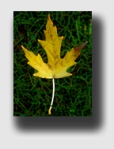TAKE A LITTLE OFF THE SIDES
The Massachusetts Rule is the original dose of self-reliance, holding that a landowner has an absolute right to trim back overhanging branches and encroaching roots of his or her neighbor’s tree. But even in Massachusetts, sometimes people may get carried away.
The O’Malleys had planted and nurtured nine rather rare (for Massachusetts) false cypress trees on their land, using them to form a natural screen between their home and Ruhan’s place next door. The trees were about 15 to 20 feet tall. Along came Ruhan’s landscaper, who apparently knew about the Massachusetts Rule in a crude sort of way. He trimmed the false cypress trees back to the property line and then some, sawing them right down to the trunks on Ruhan’s side of the trees. The court said that the trees continued to survive and even to serve as a screen, but that their “aesthetic integrity” had been compromised by the negligence of Ruhan’s agent. That’s legalese for “the trees looked like hell.”
In the battle of the experts, the O’Malleys lept to an early lead. Their arborist expert witness testified that replacement of the trees would cost about $14,000. Ruhan’s expert didn’t testify as to the cost of cleaning up the damage but instead suggested that the trees were still growing and still screening the O’Malleys, so the shaving of one side of the trees didn’t really harm anything. The Court disagreed with Ruhan, finding that loss of aesthetic integrity was indeed damage, regardless of whether the trees still grew or not. And because Ruhan’s expert hadn’t put in any evidence challenging the O’Malleys’ estimate of $14,000 to replace the trees, that number was the best evidence the Court had to go on.
 The lesson is that the expert should have covered all the bases: he or she should testify that there was no loss, but if there was, it would only cost an amount certain to repair. If you don’t give the court your own evidence, you can hardly blame the judge for using the other side’s. And a curious note: the Court of Appeals suggested that the whole notion of whether Ruhan was entitled under the Massachusetts Rule to trim all the way to the trunk wasn’t necessarily settled, but because he didn’t raise the question on appeal, the Court couldn’t consider it.
The lesson is that the expert should have covered all the bases: he or she should testify that there was no loss, but if there was, it would only cost an amount certain to repair. If you don’t give the court your own evidence, you can hardly blame the judge for using the other side’s. And a curious note: the Court of Appeals suggested that the whole notion of whether Ruhan was entitled under the Massachusetts Rule to trim all the way to the trunk wasn’t necessarily settled, but because he didn’t raise the question on appeal, the Court couldn’t consider it.
O’Malley v. Ruhan, 2006 Mass.App.Div. 174, 2006 Mass. App. Div. LEXIS 65, 2006 WL 3501553 (Mass.App.Div. 2006). The O’Malleys sued Ruhan after his landscaper pruned the branches of their nine false cypress trees — 15 to 20 feet tall each — back to the trunks of the trees, rendering the trees permanently lopsided. The trial court held that the value of the trees, although they survived, was equal to their replacement cost, and awarded the O’Malleys $14,007. Ruhan appealed.
Held: The O’Malleys were entitled to recover the replacements costs for the false cypress trees. O’Malley’s arborist expert opined that replacement costs totaled $14,007.00. Ruhan did not object to that expert’s testimony, including to his opinion as to replacement cost. In absence of objection, the Court said, the expert’s testimony was to be accorded appropriate evidentiary weight. Ruhan’s expert, on the other hand, apparently testified in essence that the mutilation of the trees did not diminish the value of O’Malley’s property at all, that is, that Ruhan’s negligence caused no harm of any kind to O’Malley.
Because the trial court found that harm had been caused, the Court said, that issue was decided. The only issue was the amount of damages. The Court held that it would be appropriate to award damages based on the value of the timber, on diminution in the value of the property, or for the reasonable costs for restoring the property to its original condition. Observing that courts throughout the country have placed a greater emphasis on the rights of a property owner to enjoy the aesthetic value of trees and shrubbery, notwithstanding the fact they may have little commercial value, the Court held that when trees are destroyed by a trespasser, “sound principle and persuasive authority support the allowance to an aggrieved landowner of the fair costs of restoring his land to a reasonable approximation of its former condition, without necessary limitation to the diminution in the market value of the land.” Because the amount awarded by the trial court was based on the only damages figure in evidence, it was reasonable.
Interestingly enough, the appeals court made reference to the Massachusetts Rule first enunciated in Michalson v. Nutting. The Court observed that while it is the law in Massachusetts that a neighbor has the right to remove so much of a neighbor’s tree as overhangs his property, “[e]xplication of the parameters of this right, though, is as scarce as palmetto palms on Cape Cod. Presumably, the right is one that must be exercised in a reasonable manner.” But, the Court noted, whether Ruhan was within his rights or not under the Massachusetts Rule was not raised on appeal, so the Court didn’t decide it.



